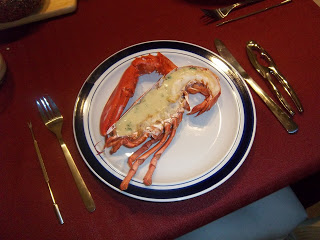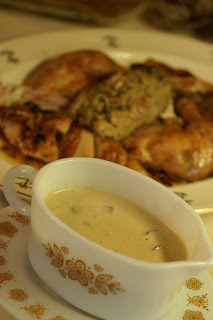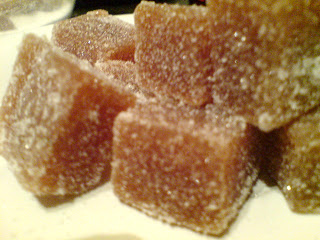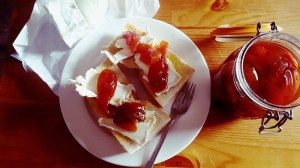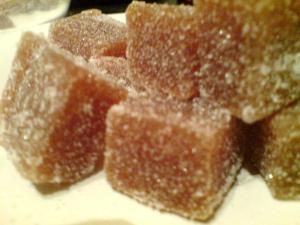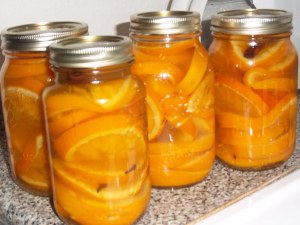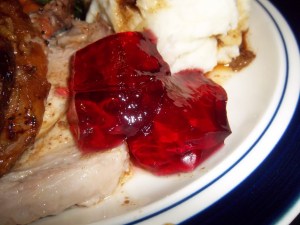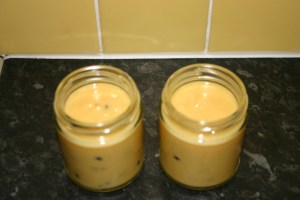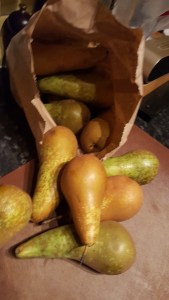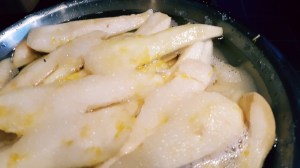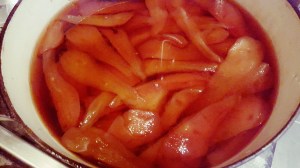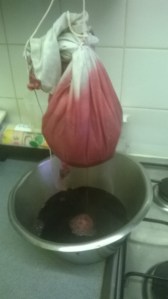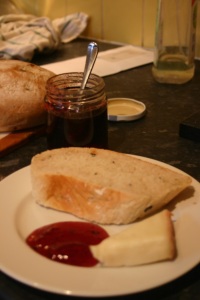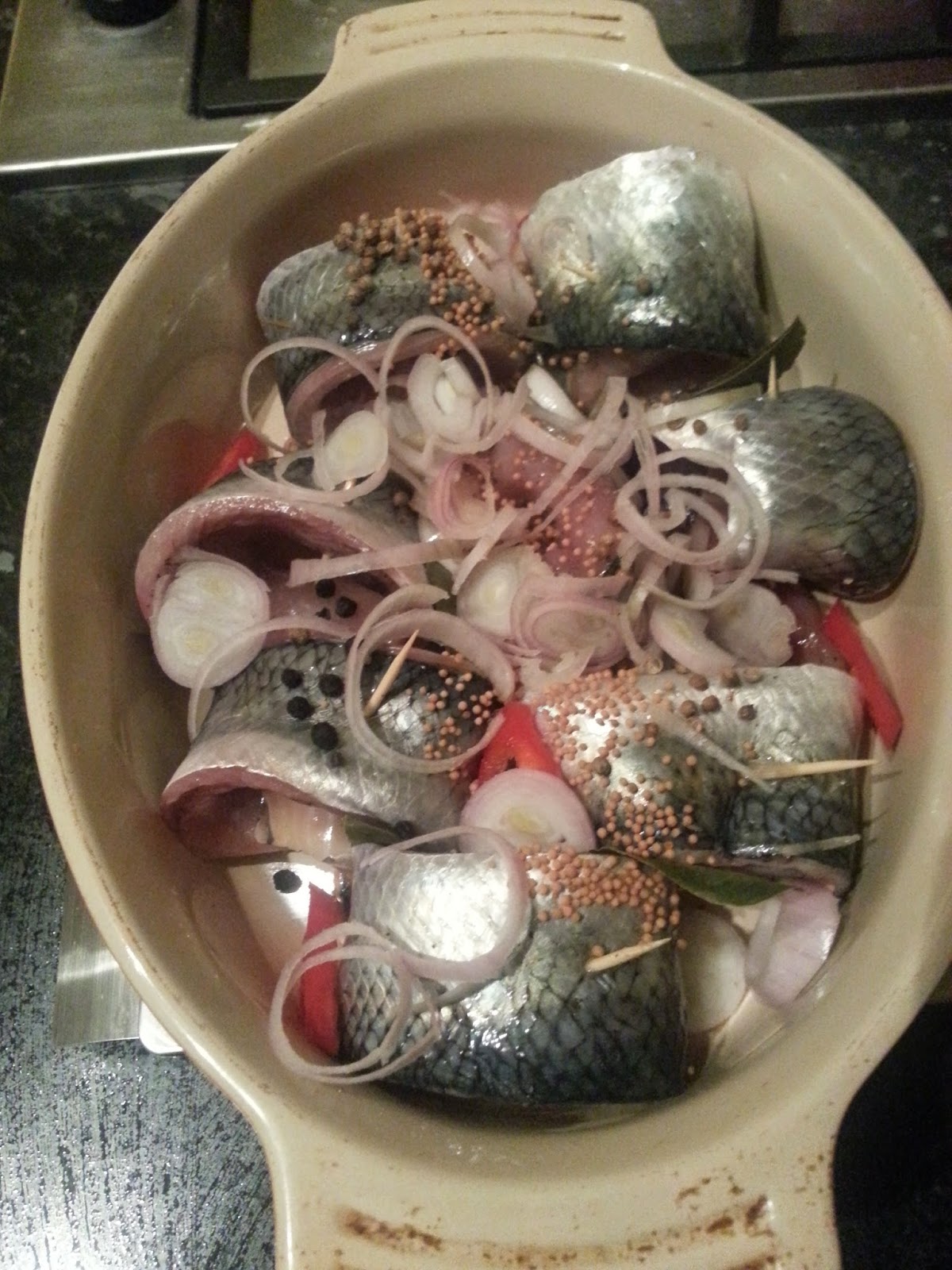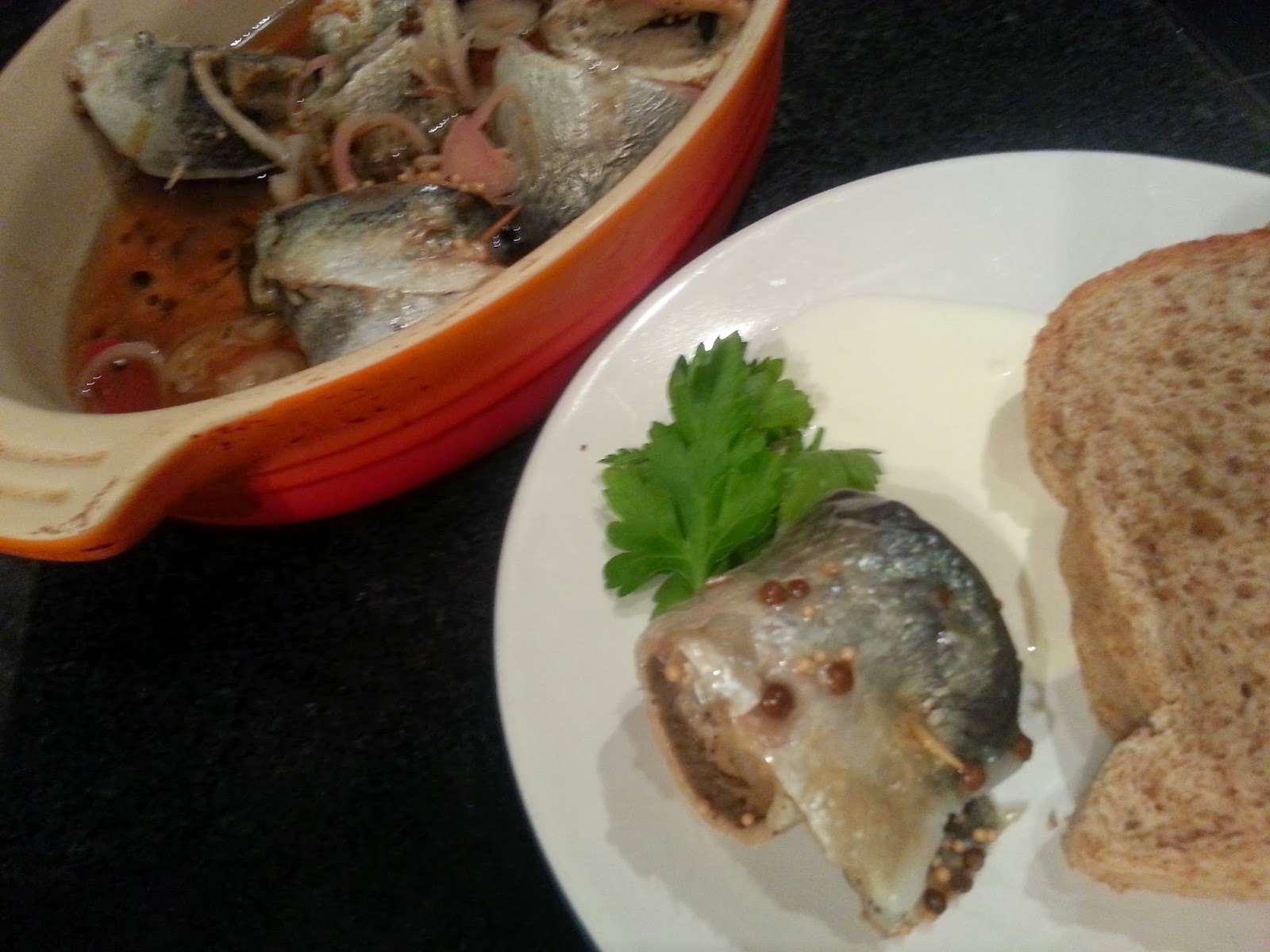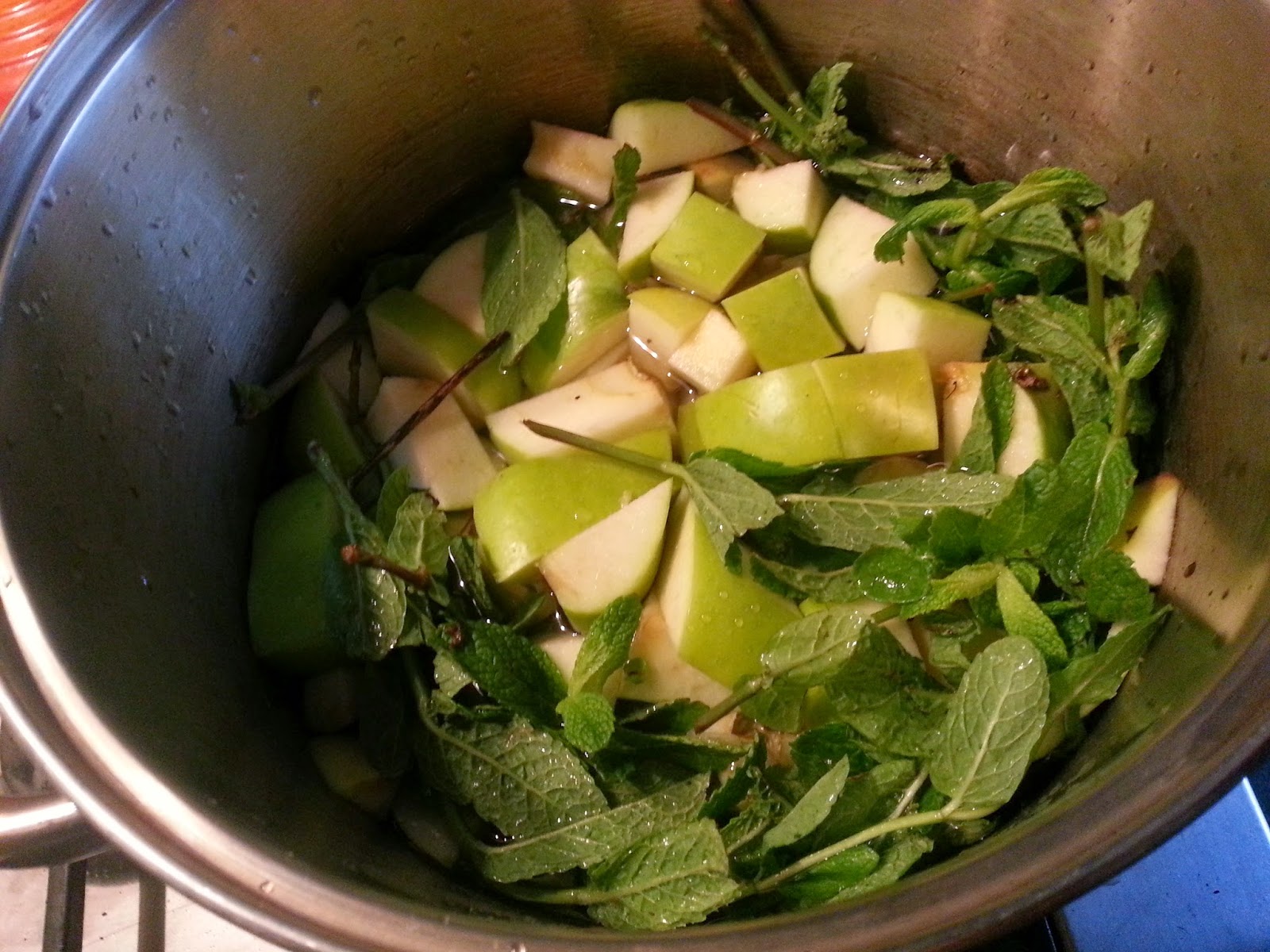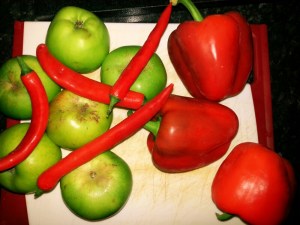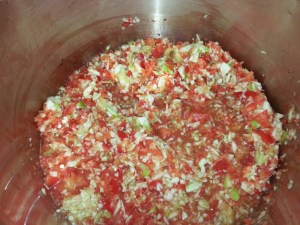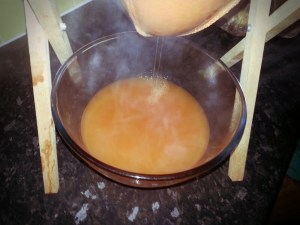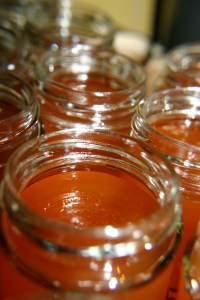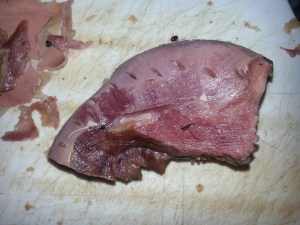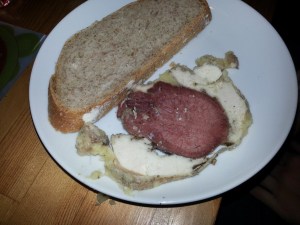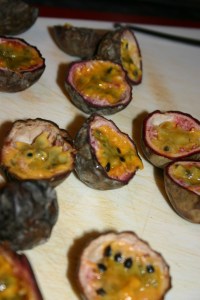
Hello folks! Did you know its been almost a year since I wrote my last post proper on the blog? I do apologise; I’m down to the final ten recipes and each one has been eluding me in one way or another – that is until now. In fact I’ve lined up a few so that there will be a steady stream of posts for the remainder of the year.
This one, oddly, is not really a recipe because smoking meat, says Jane, ‘is something that few people care to undertake now’, and rather than providing us with a method, advises us against having a go; that is, unless you have ‘an experienced friend to guide.’1
My intentions were to have a go at constructing my own cold-smoker and installing it my backyard, but I never seemed to have the time or wherewithal, then I moved to an apartment and assumed it just wasn’t going to happen. However, home smoking has moved on a bit since Jane’s day, and it can be both simple and inexpensive simply, as I found when I stumbled upon the ProQ Eco Smoker Box online; essentially a cardboard box with metal shelves. I immediately purchased one along with some oak wood dust. Exciting times.

I was soon eager to be tasting some proper home-cured-and-smoked foods that would preserve whatever meat I decided to cure properly: today, smoking is purely ‘cosmetic’1 because we like the flavour, but our refrigerators are doing the preserving for us these days. (For the same reason, less salt is used in the curing process too.) Indeed, the whole process of smoking is sidestepped; many ‘smoked’ meats in today’s supermarkets are merely injected with a woodsmoke ‘flavouring’, a far cry from what our recent ancestors were tucking into.
When smoking was done at home, a smokehouse was not typically used. The housewife of a medieval home hung her salt pork in the rafters above the central chimney. Then, when stone chimneys were built in dwellings, a recess was made so that hams would benefit from a good smoking with being cooked. According to Dorothy Hartley, these recesses are discovered in old houses and are ‘often mistaken for “priest-holes”’.2 In other buildings an external wooden hatch was built in the highest section of the chimney so that year’s hams could safely cold smoke. Hartley also gives us a lovely illustration of a home-made smoker made from a hogshead, which essentially works exactly like the ProQ smoker I bought. Very pleasing.

If you want to try and smoke your own meat you need to cure it first, and there are many examples of that in the blog/book. However, I decided upon making my own smoked bacon, which I could either fry in rashers or cook a large piece as an accompaniment to #374 Pease Pudding or in a nice #98 Cawl. Oddly, there is no recipe for a bacon cure in English Food, so I had to look to others for help.
For the bacon I used a 2 kilogram piece of pork belly because it looked like it would fit just right in my smoker. I adapted a recipe given in River Cottage Handbook No.13: Curing & Smoking by Steven Lamb.3 I changed a few things: I used dark brown sugar and the tried-and-tested Jane Grigson cure combo of crushed juniper berries, allspice berries and black peppercorns, just like one of my favourite recipes #228 Spiced Salt Beef, though I toned down the amount of spice somewhat. I avoided using nitrates and I’m sure Jane would agree with me on that today, even though she used ample amounts of it in her Cured Meat recipes.
For a 2 kg piece of pork belly (skin on and bone in):
750 g fine sea salt
750 g soft dark brown sugar
2 heaped tsp each juniper and allspice berries, crushed
1 tbs black peppercorns, crushed
6 or 7 bay leaves, crushed or roughly chopped
Mix all of the cure ingredients together, then scatter a handful of the mix over the base of a container large enough to fit your piece of pork, then scatter a second handful over the pork.

Now rub the mix into the underside, skin and edges of the pork, making sure you work it into any holes or flaps in the meat.
Cover and leave in a cool place – a larder or fridge – for 24 hours.
Next day lift the pork out of the container and pour away the liquid brine, then repeat what you did yesterday: one handful of cure beneath and another on top of the meat and rub in.
Repeat this over the next 5 or 6 days – i.e. until you have run out of cure mix – then rinse away any spices under the tap, pat dry with a clean cloth or kitchen paper and rub in a little malt vinegar all over the meat.

Use two hooks to hang your meat in a cool airy place for 2 weeks – I used my garage which is very cool and dry, especially in the late winter/early spring here in the UK.
Now all you need to do is smoke it! Rather than type the process, I thought it quicker and easier if I showed you what I did next:
#441 Smoking Meat. Not a recipe, but it has forced me to dry cure and smoke my own meat, and my goodness, how delicious it is! You really should try it yourself – the Lamb-Grigson hybrid recipe worked like a dream and the smoker gave off so little smoke I doubt neighbours would notice it ticking away. The salt, butter and cheese worked a treat too. 10/10.
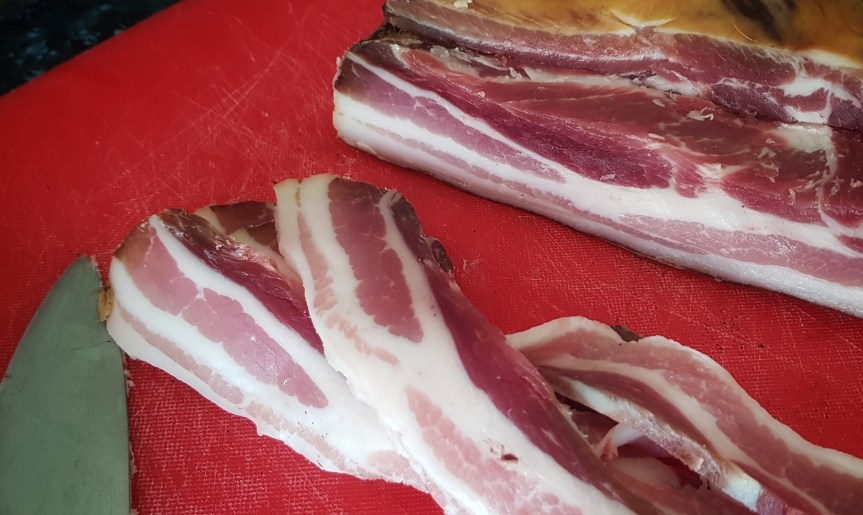
References:
1. Grigson, J. English Food. (Penguin, 1992).
2. Hartley, D. Food in England. (Little, Brown & Company, 1954).
3. Lamb, S. River Cottage Handbook No.13: Curing & Smoking. (Bloomsbury, 2014).

